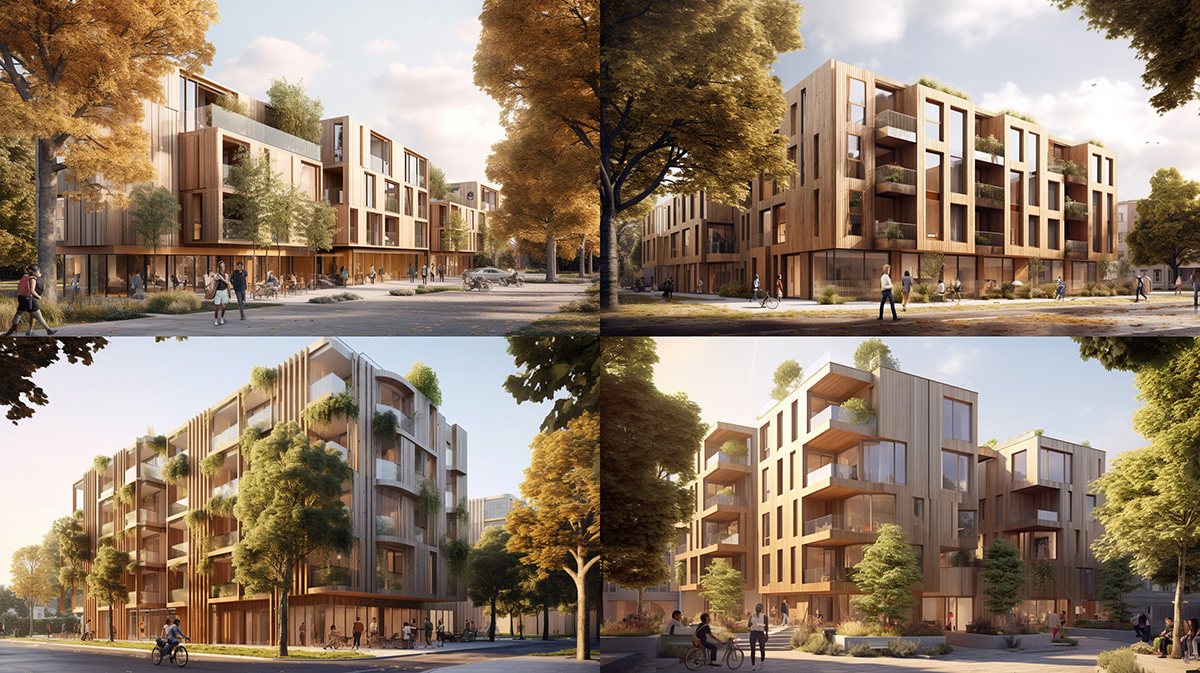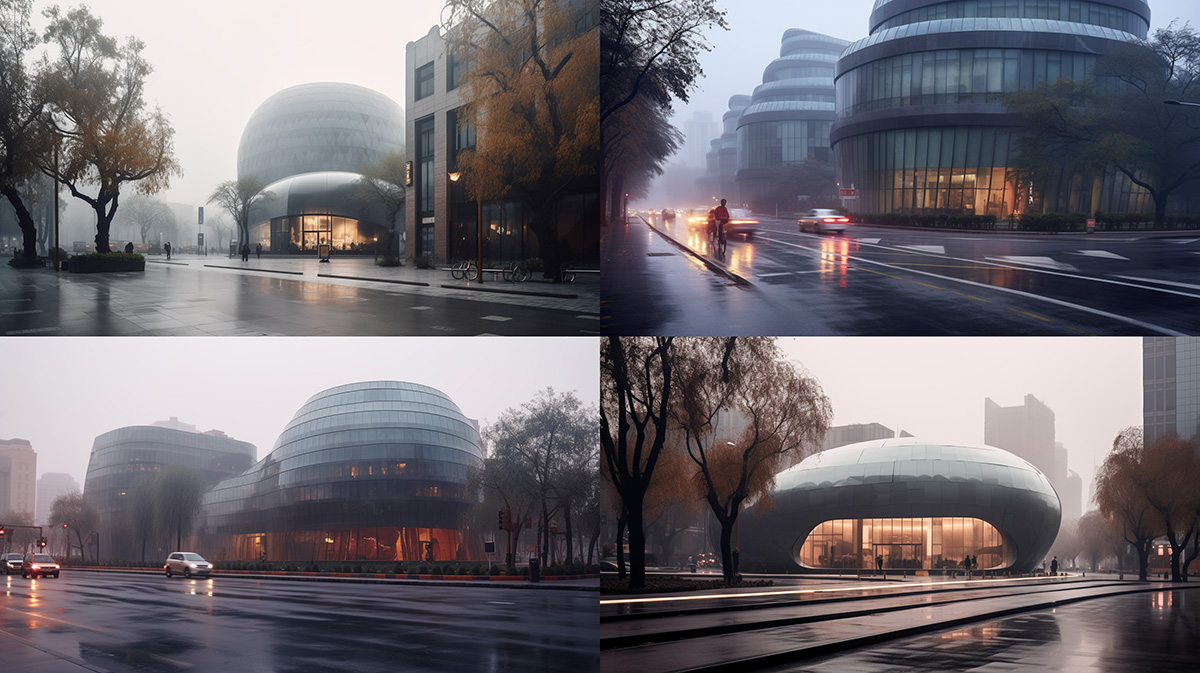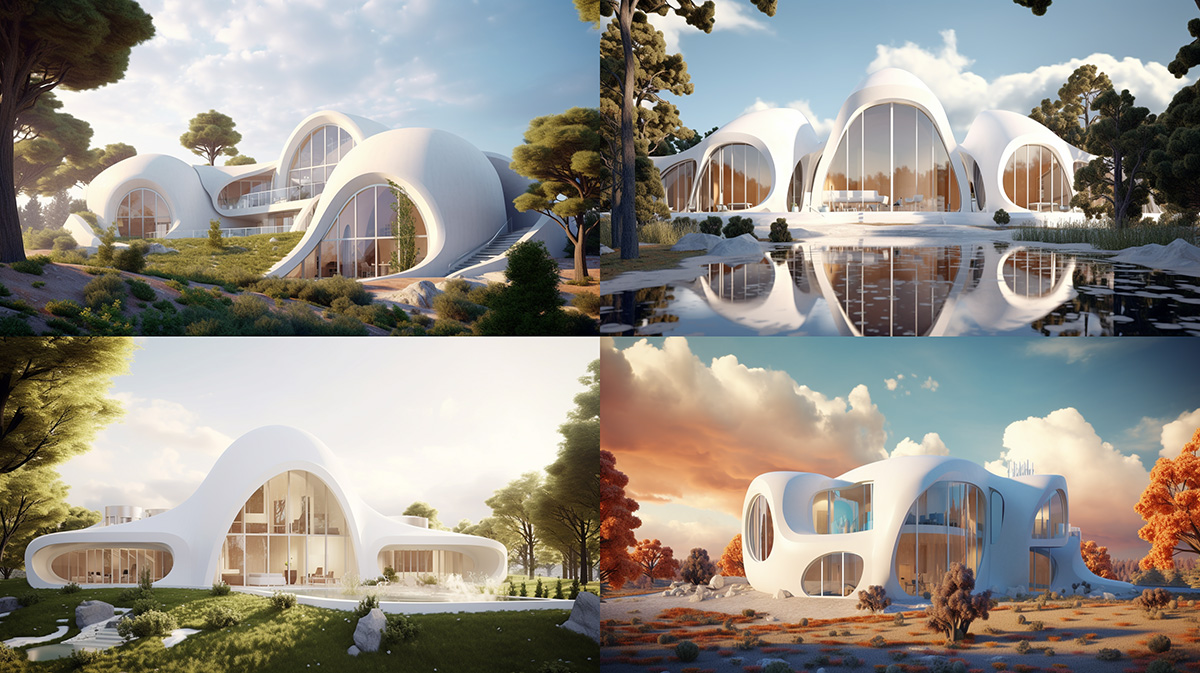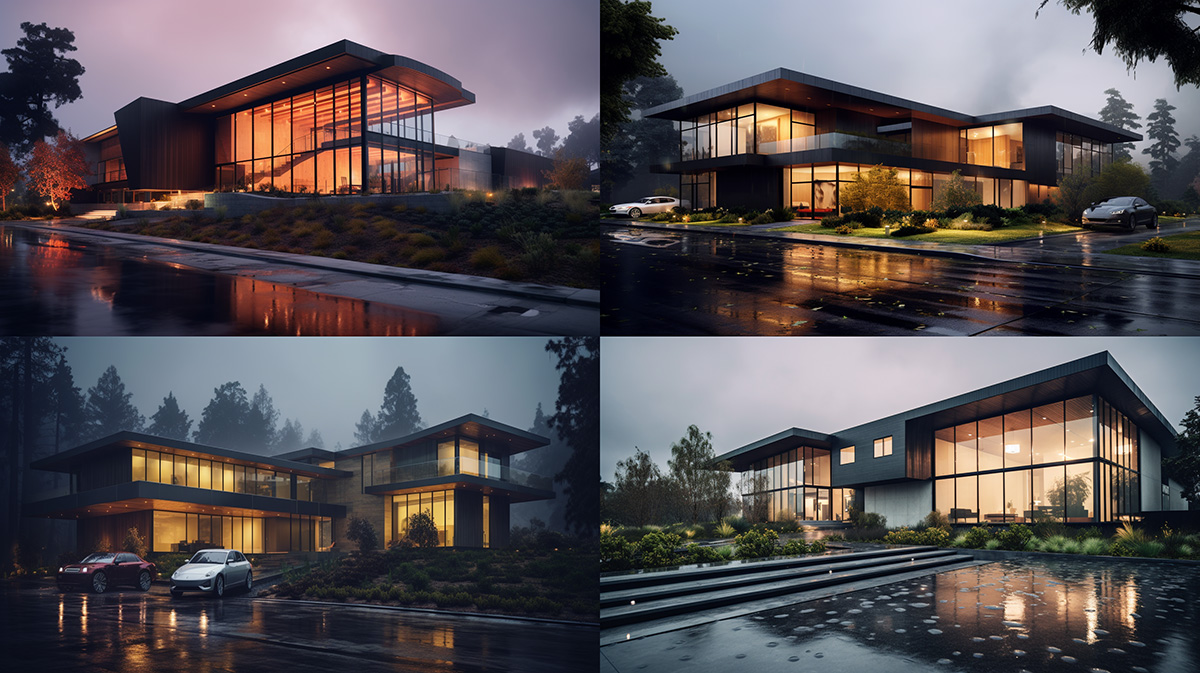Having played around with tools like MidJourney, Stable Diffusion and Adobe Firefly it is certainly exciting seeing what AI is able to do. Once upon a time theorists professed that AI would never be able to create art like humans, but it turns out it can and now, in 2023. If you haven’t tried it yet, I encourage you to do so, not to avoid being left behind, but because it is truly incredible and is changing the way we do things permanently. By using text prompts to describe an image you want, these tools are able to generate photorealistic images that need to be seen to be believed.
As I read more and more about the AI revolution and the way it is changing architecture it gives me pause for thought. What happens when computers are designing our buildings? Will people still engage with them in a meaningful way? Will architecture hold the same prestige if not esteemed with the same signature style of a talented Architect? Why are we in such a hurry to replace ourselves?
There are a couple of challenges with AI art though that I think is important to ponder. Firstly, AI art is not your art. You do not own the intellectual property to the work that you create, so using them in a meaningful way may be difficult. Secondly, AI art is not accurate, its a generative process based off billions of images that a machine learning algorithm has come up with, so while it is certainly intelligent, it doesn’t correspond to a real world design in the way an accurate 3D model will, however there are tools being developed that I am sure will address this soon enough. The last thing I have noticed from my own explorations is that it’s hard to refine and control. Making artwork that is specific is challenging because the adjustments you may want or need to refine an image for design purposes just don’t allow for such granular prompting and even if it did you could spend just as much time doing that as to do a 3D render that fully adjustable.
But just looking at it from a conceptual point of view, AI Art is a revolution. No longer do you need to scour the internet for reference images to create mood boards for a project, now you can use these tools to create limitless options and styles of images that are close to what you want to help inspire you and the client on what may be possible. It’s like having limitless reference to work with. With all this amazing technology and all these ideas, what now becomes possible from a design perspective could be nothing short of a renaissance. As an artist, as I am sure as any Architect would also agree, better design outcomes are what we all want. Now you have unlimited help.
I have seen a lot of fear and hysteria online that our work as Artists and Architects is doomed and that soon we will all be replaced with AI, however I tend to think quite the opposite. What happens when we present these amazing concepts to our clients and better more efficient documentation systems evolve? In my opinion this only pushes the needs for beautiful renders even higher and the demand for our skills and time even greater so as to meet the new rising expectations. So too with architectural design documentation and project supervision as our new designs and processes drive a new revolution in the architectural field. Better products and materials, better designs and more natural forms, better more efficient buildings that are not only sustainable but beautiful. Built forms that work and inspire in their own right. We won’t have less to do, we will have more, because as the needle of expectation moves so does the need for people to guide and deliver on these AI promises, and I am truly excited to be a part of this new phase of design.
As these AI tools flood our workplaces and our worlds the only real currency will be Trust.
The work we do and the expertise we bring in the way things are done physically, alongside new and improved tools that can help us build better design outcomes, will bring new levels of responsibility and creativity that the architectural field yearns for. Will AI eventually destroy the human race? I don’t know. But allowing all people to be more creative and express themselves visually by democratising the tools we use has to be a good thing in the short term. Let just hope the next generation of AI likes us and wants to keep us around.
Images generated using MidJourney and the guidance of coursebooks from Coorlas Architecture. If you are keen to learn more, checkout: https://www.coorlasarch.com/products









